
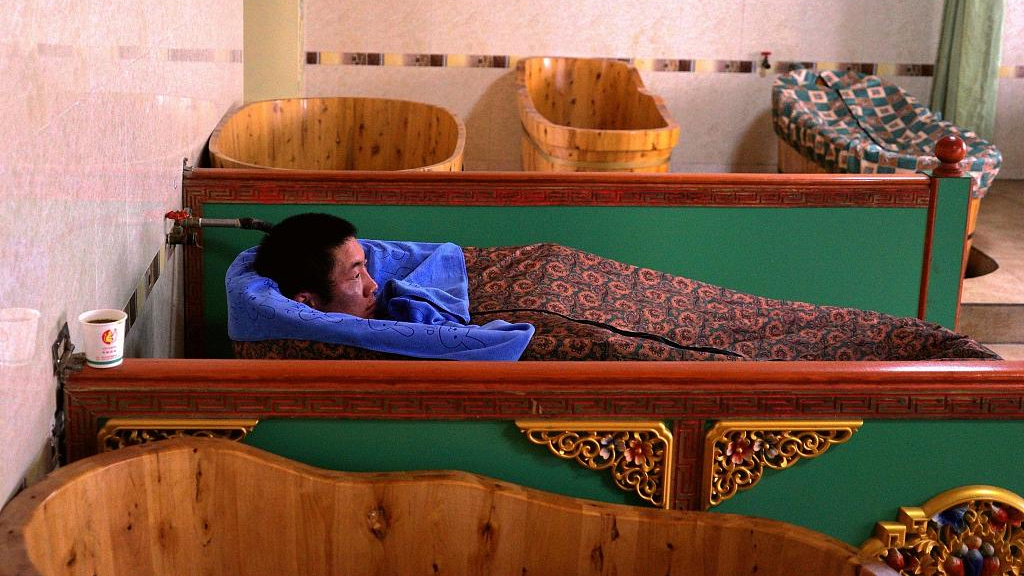
Centuries-old Tibetan medicinal bathing has seen growing popularity and influence in recent years, especially after it was recognized by UNESCO last year. But insiders also express their concerns over its future development.
Formally known as Lum Medicinal Bathing of Sowa Rigpa, the age-old therapy that existed for over 3,800 years indicates the traditional knowledge and practices of bathing in natural hot springs, herbal water or steam to adjust the balance of mind and body, to ensure good health and treat illnesses.
Migdrol from the Traditional Tibetan Medicine Hospital of Shannan Prefecture in the Tibet Autonomous Region is a master of this time-honored medical practice. Over the past few decades, he has witnessed its evolution and ever-increasing popularity in clinical use.
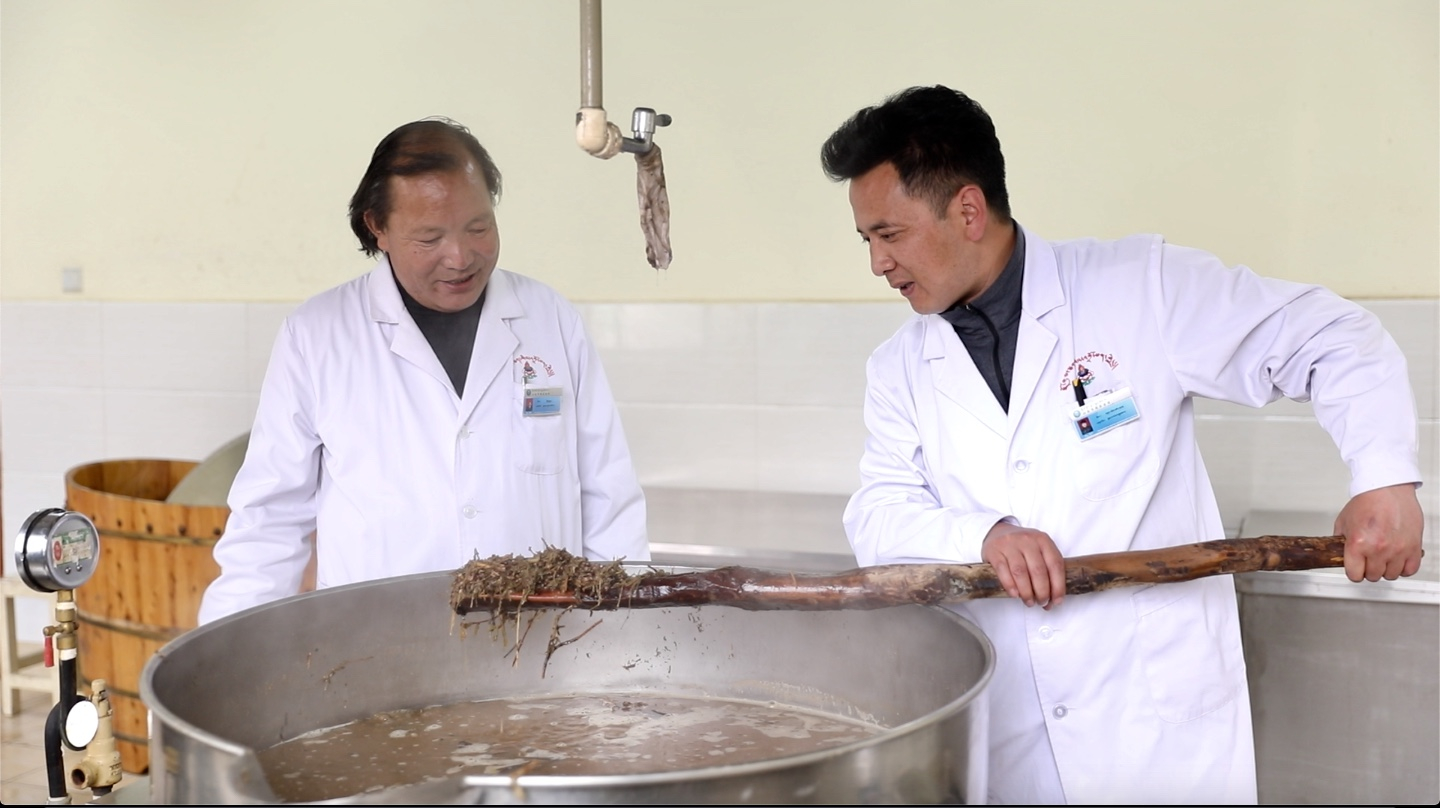
Migdrol from the Traditional Tibetan Medicine Hospital of Shannan Prefecture, Tibet Autonomous Region, instructs a young doctor. / CGTN Photo
“There were only one or two bathtub-like wooden buckets back in 1985 when the hospital first brought in the bathing, and few people visited us,” Migdrol recalled.
Now the hospital has established a separate department with scores of metallic “bathtubs” as the number of patients continues to grow. 71-year-old Lobsang Dolma is a frequent visitor here and speaks highly of the bathing.
“I keep seeking this treatment regularly since I learned that I had diabetes years ago. It can effectively relieve the symptoms of related complications,” she said.
Migdrol explained that through the bathing, herbal nutrients are easily absorbed by the blood capillaries, while the body’s toxins are sweated out, thus balancing the patients’ endocrine system and boosting immunity.
“The treatment has no bad side effects on the human body,” said the veteran doctor, who is also a national-level intangible cultural heritage inheritor of Sowa Rigpa. Herbal bathing has been widely used to treat rheumatism, skin diseases and some other illnesses in Tibetan areas across China.
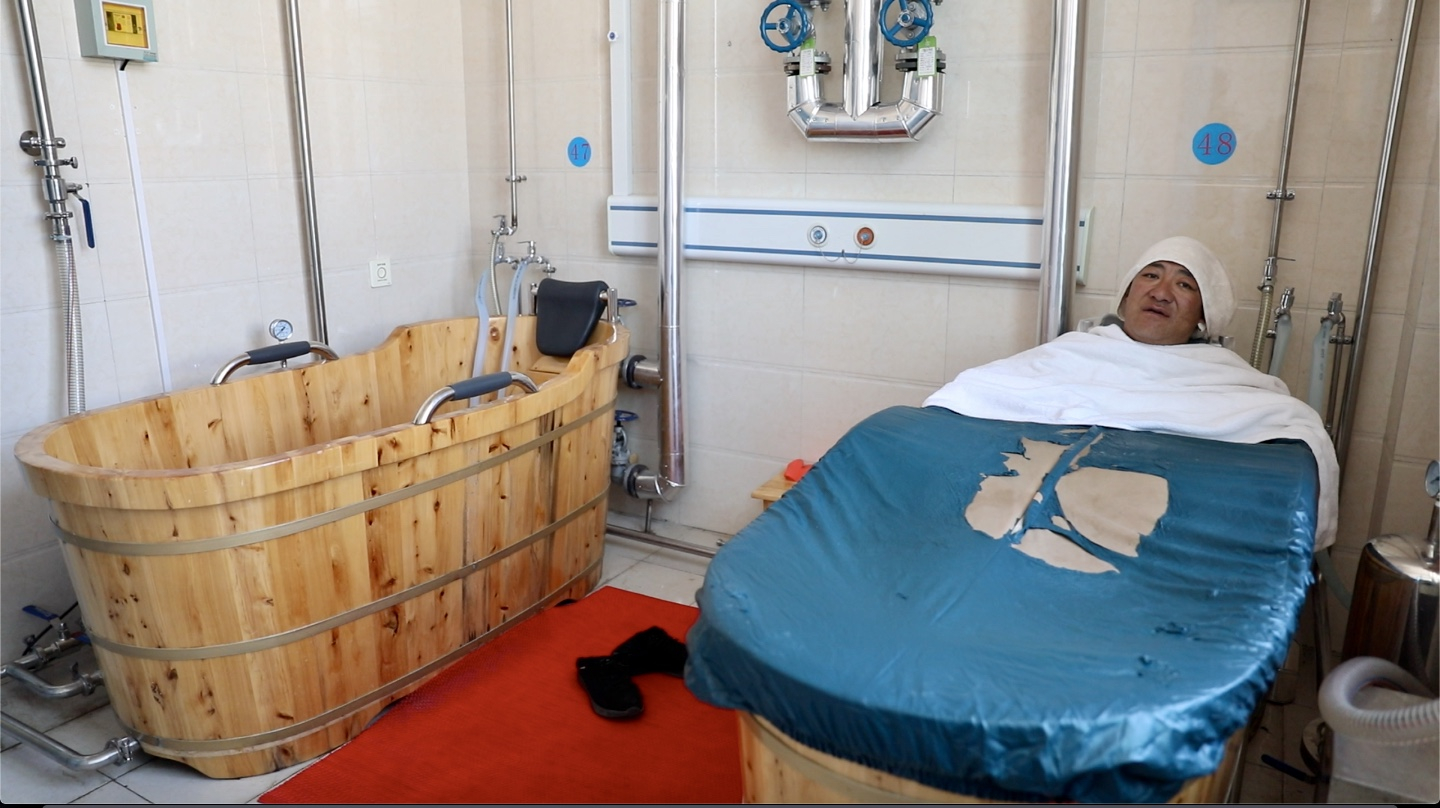
A patient receives a Tibetan medicinal bathing treatment at the Tibet Autonomous Regional Traditional Medicine Hospital in Lhasa, Tibet Autonomous Region. /CGTN Photo
The Tibet Autonomous Regional Traditional Medicine Hospital in Lhasa also offers traditional bathing as a treatment. The new center that opened in March can accommodate many people as it has sufficient medical staff.
Moreover, the department upgraded its production technique.
“We set up a special extraction workshop two years ago. In the past, each step was done manually. With modern extraction equipment, medicinal output greatly increased and its efficacy improved,” Dolma, the director of the center, told CGTN.
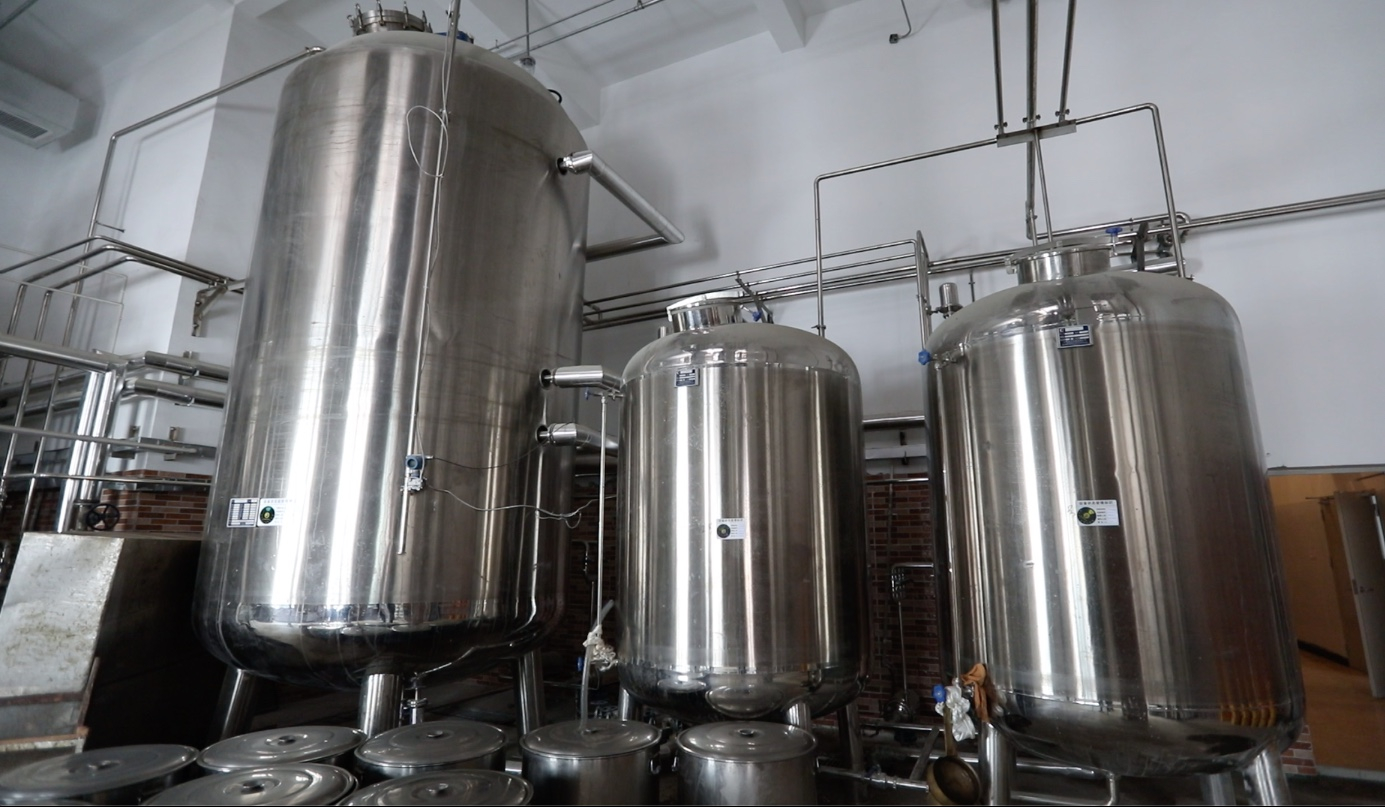
Modern equipment is installed in the Tibet Autonomous Regional Traditional Medicine Hospital in Lhasa, Tibet Autonomous Region, for better extraction of the medication. /CGTN Photo
Traditionally, producing medication is a long process that involves particular techniques. Several native wild herbs need to be repeatedly boiled and fermented before the “bathing essence” is ready.
Many inland cities have also shown interest in the tradition after it was added to the Representative List of the Intangible Cultural Heritage of Humanity in November last year. Some Tibetan medicine clinics have thus attempted to offer medicinal bathing to their clients.
Both Migdrol and Dolma say they hope a broader range of people can enjoy the treatment, but the raw materials pose a challenge.
“All the herbs (used for medicinal bathing) are indigenous. Tibet is abundant in various herbs, but the vegetation on the plateau is weak, so the (limited) supply of medicinal herbs will be an obstacle for large-scale implementation,” said Migdrol.
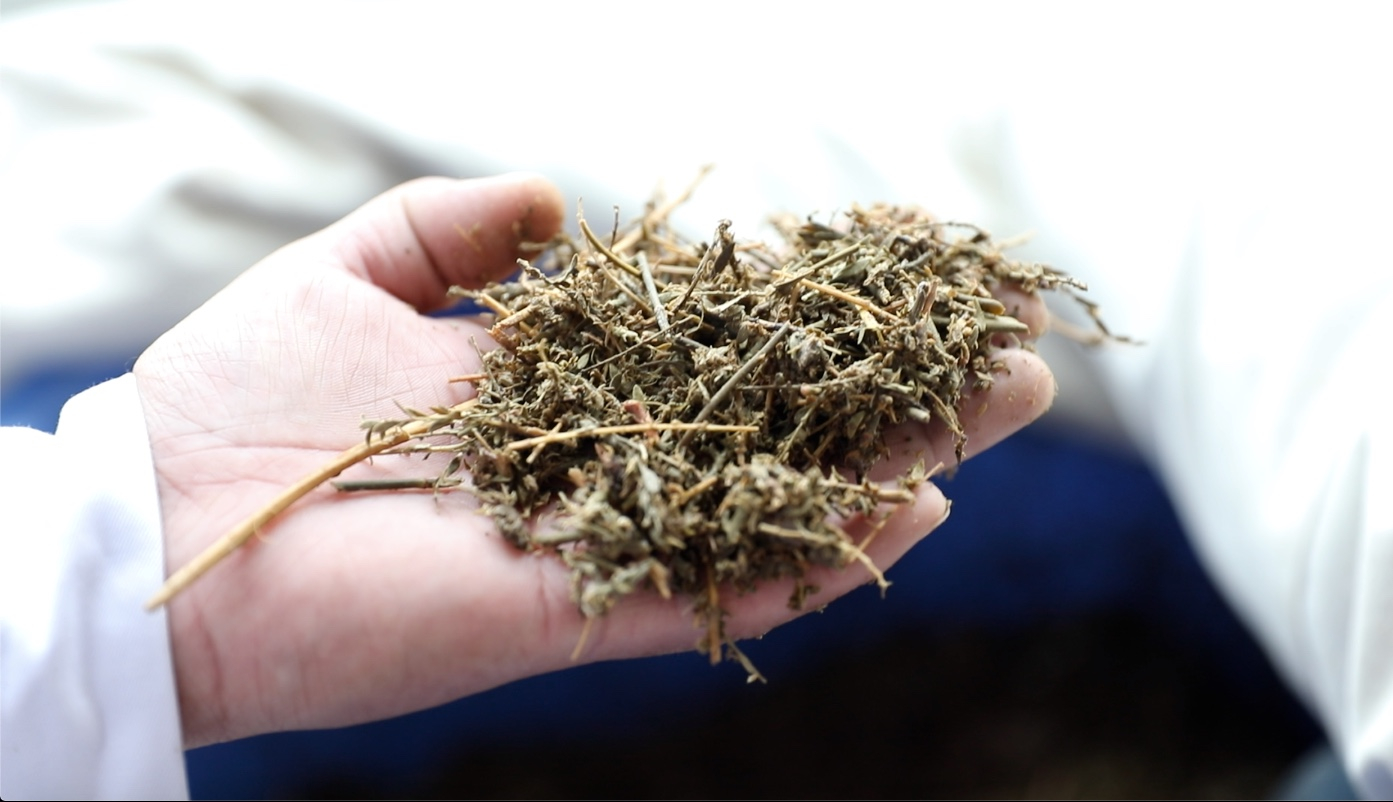
A doctor shows some of the herbs used to produce the medication for Tibetan medicinal bathing. /CGTN Photo
Insiders into the industry are concerned that over-commercialization may damage the authenticity of the tradition and harm the plateau’s ecological environment.
“We have to educate the public about the fact that Tibetan medicinal bathing is not as simple as having a hot bath. It’s a serious medical practice which bears a lot of Tibetan cultural elements and Tibetan medicine contents,” Yangkar, a professor from the Tibet Traditional Medicine College, told Xinhua News Agency.
Many experts say a scientific industry guideline is urgently needed to ensure the medical practice can be properly developed.

Copyright © 2018 CGTN. Beijing ICP prepared NO.16065310-3
Copyright © 2018 CGTN. Beijing ICP prepared NO.16065310-3